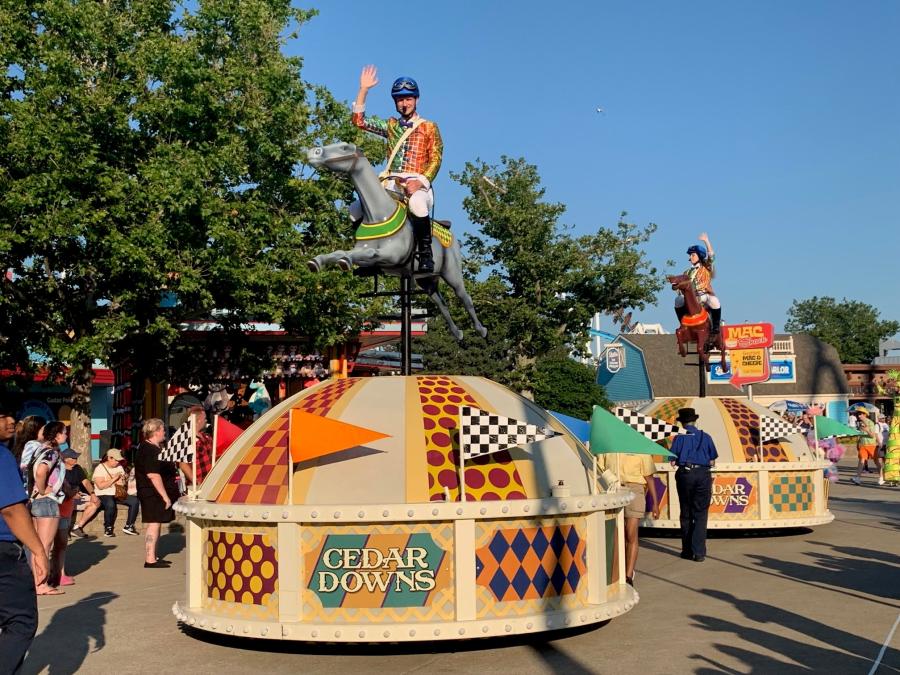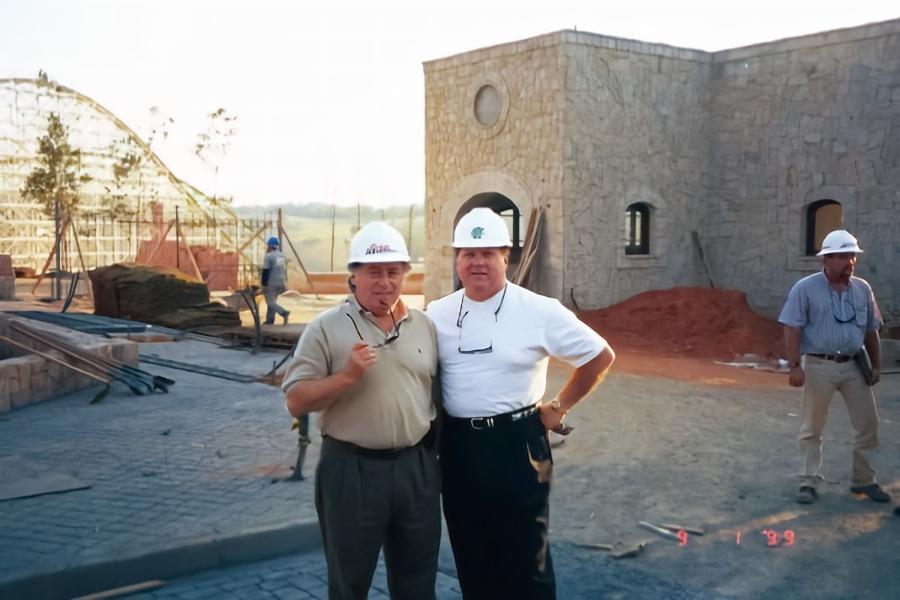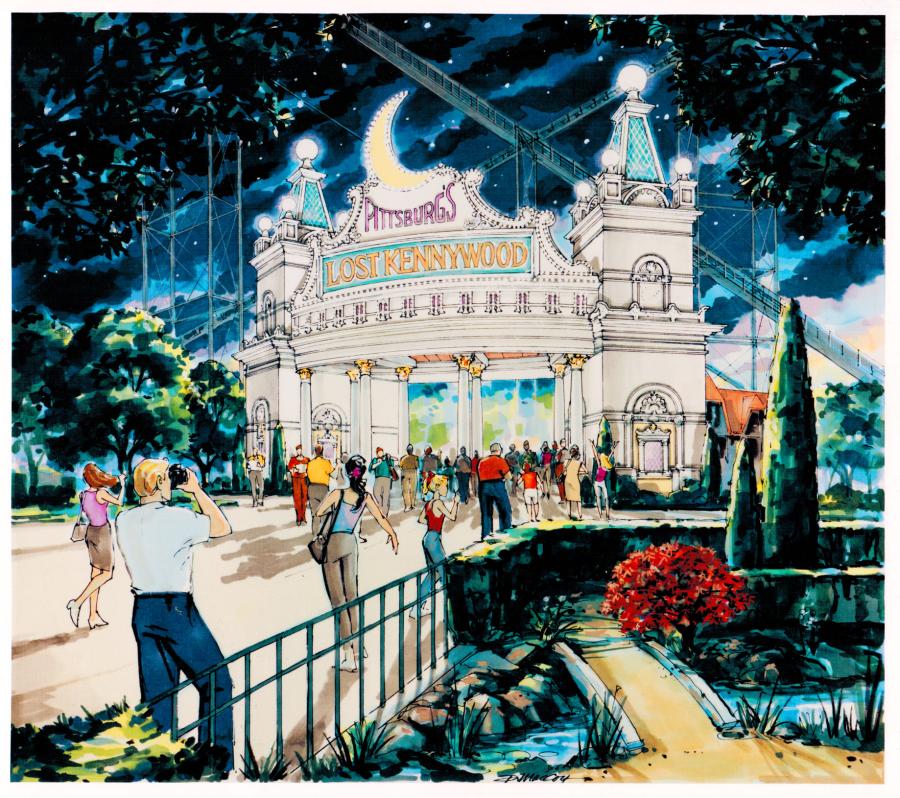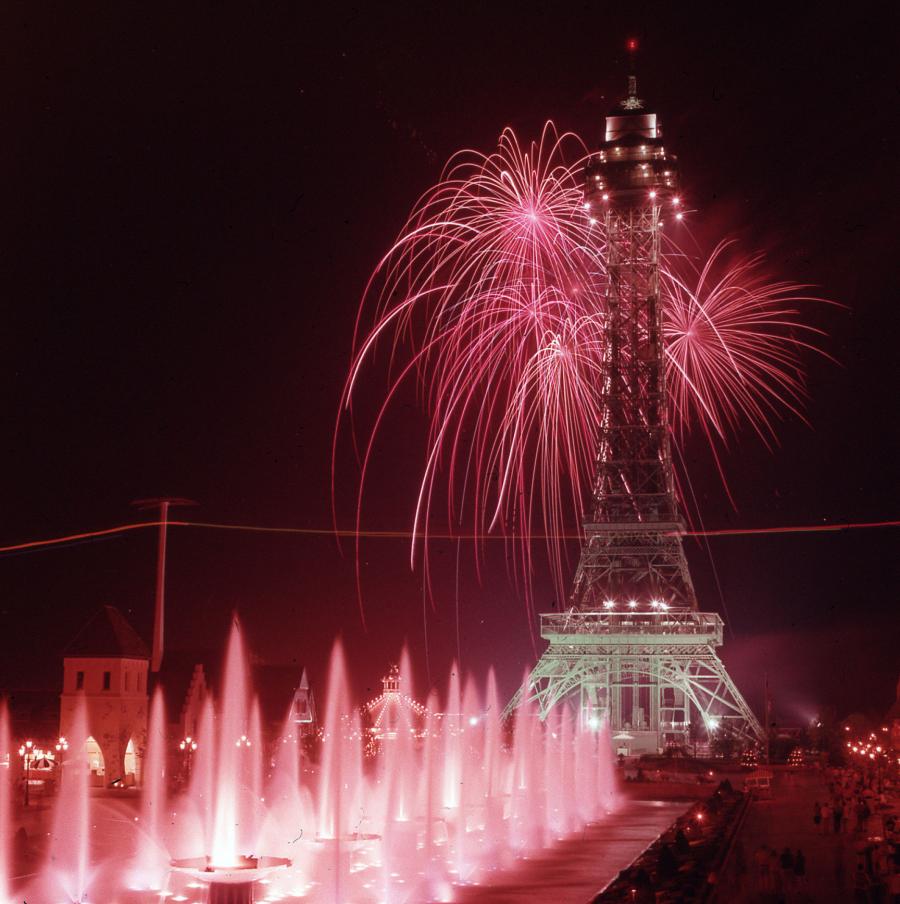For more than 40 years, a community of attractions industry suppliers has thrived in Cincinnati, Ohio, well outside the better known hubs in California and Florida. Roughly two dozen companies in the area offer a diverse array of goods and services, prompting one to ask: “How did this cluster emerge and thrive in an unlikely location?”
A Theme Park Created by an Amusement Park
The answer comes from the storied development of the Kings Island theme park. It is an origin story different from other attractions developed during the era of major North American theme park growth between the 1950s and 1970s. Rather than a company seeing an opportunity to diversify into a new industry (which was common at the time), Kings Island was developed by an existing amusement park—Cincinnati’s Coney Island.
Coney Island was increasingly challenged by its landlocked, flood-prone location. After a major flood in 1964, park leaders started making plans to relocate to a larger suburban location, teaming up with Taft Broadcasting in 1969 to make their plans a reality.
“We were already in the business and knew people,” says Gary Wachs, who spearheaded Kings Island’s development for his family. which had owned Coney Island since 1924. With their local roots firmly planted, the Wachs family didn’t bring in outside consultants to help develop the new park. “We thought we had no need for them,” Wachs tells Funworld.
According to Dennis Spiegel, who was part of the development team, as the project progressed, they started augmenting departments with local people in disciplines they needed. One example he cited was the hiring of Jack Rouse, founder of the musical theater program at the Cincinnati Conservatory of Music, as the park’s director of live entertainment.
On Their Own
Kings Island was an immediate success, and almost as soon as the park opened, individuals began leveraging their experience to start their own firms.
Structural engineer Curtis D. Summers, who worked at Coney Island and on the construction of Kings Island with Hixon Engineering Company, opened his own firm, Curtis D. Summers, Inc. in 1972. By the time he passed away in 1992, he was involved in the design of nearly 20 wooden roller coasters among other numerous industry projects.
In 1975, Randall Kent, Kings Island’s costume supervisor, followed forming Stagecraft Inc., a costume design company.
The popularity of Kings Island spurred Taft Broadcasting to create Kings Productions to handle the design work for the theme parks they were developing and acquiring around the world, while also taking on outside assignments.
“That saved a lot of money and headaches,” recalls Wachs. By the early 1980s, several people who grew up with the company were looking for new opportunities. In 1983, Charlie Dinn, Kings Island’s director of construction, maintenance and engineering and the “father” of Kings Island’s legendary Beast roller coaster, formed Dinn Corporation.
After being hired to assist in the construction of the Phoenix at Knoebels Amusement Resort in Pennsylvania, Dinn went on to team with Summers to revive wooden roller construction through the 1980s. Although Dinn Construction closed in 1991, the company lives on in spirit, having been succeeded by Custom Coasters, Inc. (1991 to 2002) and later led to the modern day Gravity Group, both based in Cincinnati. Today, half of the world’s operating wooden roller coasters were designed and/or built by Dinn Construction or companies in which former employees were involved.
Meanwhile, a wind-down of operations at Kings Productions in the 1980s led to several employees forming their own firms. Rather than head to California or Florida for their next major opportunity, many Kings Productions alumni decided to stay home in Cincinnati and start their own companies.
“As we aged and matured, we started going out on our own. Things had changed, management had changed, the company stopped developing and downsized,” says Spiegel, who started International Theme Park Services in 1983 after leading international development for Taft’s theme park group.
Other co-workers soon followed, each starting firms to reflect their own areas of expertise. Director of Design Bruce Robinson formed Bruce D. Robinson Associates (now BDR Design Group) in 1983. Vice President of Marketing Tom Kempton launched The Kempton Group (now TKG) in 1986, and in November 1987, Jack Rouse left Kings Productions to start Jack Rouse Associates (now JRA, part of RWS Global) a design and production studio.
Fortuitous Timing
While new theme park developments had slowed in North America, it was taking off elsewhere, and developers from across the globe sought out their expertise, cementing Cincinnati as an industry supplier hub.
“It rooted the industry here at the beginning,” says Spiegel, noting that many of the local companies had 15 to 20 projects at a time and were able to leverage others’ core expertise to help one another build their respective businesses. “There was no magic to it, it just happened,” recalls Rouse.
Sustaining a Cluster
This initial flurry could be dismissed as a one-time phenomenon sparked by changes at Kings Productions and the desire of its employees to move on to other things. But as the industry grew, so did Cincinnati’s supplier community.
In many cases, employees of these original firms decided to go off on their own, much like Jack Rouse employee Tom Kraemer, who formed exhibit design company Kraemer Design and Production in 1994.
A few years later in 1999, live event company Iacano Productions started a scenic fabrication company—3dxScenic. Since several of their early employees previously worked at Kings Island, they were soon leveraging their industry contacts to expand into the attractions industry.
In late 2023, 3dxScenic was spun off as an independent company headed by Matt Waldenmeyer and Mark Rosenzweig, both of whom relocated from outside the region to work at 3dx.
Design firm Kingdom Productions was founded in 2001, the Gravity Group followed in 2002, while Bowling Green, Ohio-based animatronics fabricator Life Formations (now LF Studios), selected Cincinnati for a new office in 2007.
Jay Rottinghaus, executive vice president of strategy, says the company needed a larger city to scale their business, citing Cincinnati’s artistic and engineering talent that provided the diverse skill set needed for complex animatronics, combined with its cost of living, resources, and proximity to key markets. “The existing attractions community was a bonus. There’s decent cluster of companies.” Today, 70 people work at their office.
Why Cincinnati?
LF Studios is one of the latest companies to recognize the assets Cincinnati offers to the attractions supply community. From the 1980s pioneers to the new entrants, all praised the region’s quality of life, cost of living, and strategic Midwestern location. But most critically, the talent pool available in Cincinnati is a particular asset.
“People would ask, ‘Why aren’t you in California or Florida?’” says Spiegel. “We had the talent here.” Keith James of JRA credits the presence of the University of Cincinnati and its renowned Conservatory of Music and College of Design, Architecture, Art, and Planning for providing a strong talent pipeline.
The design school’s co-op program is a unique advantage. “Cincinnati has fantastic resources from an expertise and skill set perspective,” adds Rottinghaus.
While the newcomers indicate the Cincinnati cluster is strong, there is always the question of its future.
“Will the Cincinnati connection be extinguished? Not totally, but you won’t see the heyday,” says Spiegel. “The pie will still be the pie, but the pieces will get smaller. There’s more competition.”






